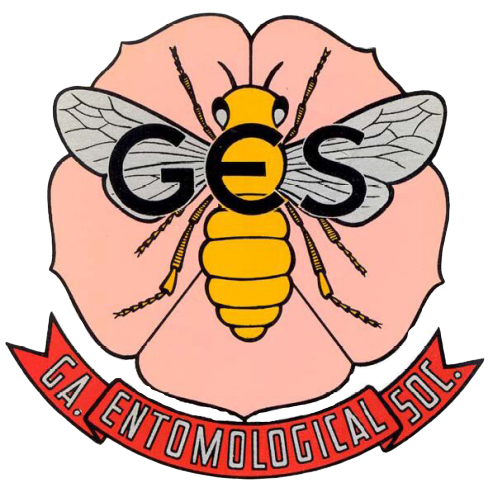Detoxifying Enzyme Profile and Total Body Lipid Content of Selected Lepidopteran Pests of Tea Plantations of Assam, India
Tea, Camellia sinensis (L.) Kuntze, a perennial monoculture was reported to be infested by 167 arthropod pests in Northeast India and 1,045 arthropod pests throughout the world. Of the 245 insect pests recorded from tea plantations in India, 13.75% of the species belong to Order Lepidoptera (Roy et al. 2014, Two and a Bud 61[1–2]: 11–39). Among the lepidopteran pests, the most common are Hyposidra talaca Walker and Biston (= Buzura) suppressaria Guenée, both of which cause substantial damage to tea (Muraleedharan and Roy 2016, Pp. 361–392, Economic and Ecological Significance of Arthropods in Diversified Ecosystems: Sustaining Regulatory Mechanisms, Springer, Singapore). The tea looper, B. suppressaria, was known to occur on tea of Northeast India since 1900 (Anonymous 1994, Memorandum 27, Tea Research Association, Tocklai Experimental Station, Jorhat, Assam, India); whereas, H. talaca has invaded the tea plantations more recently in early 1990s (Roy et al. 2017, J. Integr. Agric. 16: 2115–2127). Others, including Andraca bipunctata Walker, Macroplectra nararia Moore, and Eterusia aedea L., are sporadic pests but can cause severe damage during high infestations (Anonymous 1994).
Larval stages of all these pests are vigorous defoliators. Larvae of H. talaca and B. supressaria (Das and Mukhopadhyay 2014, Phytoparasitica 42: 275–283) prefer harvestable young shoots, whereas the other three aforementioned species prefer mature leaves (Anonymous 1994). The pest spectrum has changed in the last few years, possibly because of changes in weather patterns. Historically, B. suppressaria has been the major defoliating pest of tea, but Hyposidra sp. is now recognized as the primary defoliator. Further development of resistance to commonly used insecticides adds to pest management problems (Mukhopadhyay et al. 2016, Pp. 91–122, Technology of Tea Improvement: Some Initiative, New India Publishing Agency, New Delhi). Hence, we undertook this research to better understand the status of developing resistance among these lepidopteran pests of tea in Northeast India.
Our approach was to quantify the detoxifying enzymes and total body lipid content of the aforementioned five lepidopteran pest species. The detoxifying enzymes and the level of lipids play an important in the development of tolerance and resistance to insecticides, with higher levels of activity of detoxifying enzymes and high body lipid content ensuring greater tolerance or resistance.
Insects used in the assays were collected from various tea plantations of South Bank region of Assam, particularly from Jorhat District, of India. Late-instar larvae (n = 20) of each species were used for detoxifying enzyme assay as per the methods followed by Prasad and Roy (2017, Ann. Soc. Entomol. Fr., doi: 10.1080/00379271.2017.1396924). Briefly, each larva was starved for 2–3 h after which the clear gut was dissected out and then homogenized using ice-cold 0.1 M sodium phosphate buffer (pH 7.0). Supernatant resulted from the centrifugation of homogenized tissue was used for enzyme assay. Body fat content of larvae was extracted using glass Soxhlet apparatus (Association of Official Analytical Chemists, 1990, Official Methods of Analysis, 15th ed., Rockville, MD). All statistical analyses were performed using analysis of variance (ANOVA) in SPSS, version 15.0 (SPSS Inc., NY, NY). Differences among treatment means were determined with the LSD post hoc test (P ≤ 0.05).
Assay of the detoxifying enzymes showed that general esterase was significantly higher in H. talaca followed by B. suppressaria, A. bipunctata, M. nararia, and lowest in E. aedea (Table 1). Similarly, glutathione-S-transferase was found to be significantly higher in H. talaca followed by B. suppressaria, M. nararia, E. aedea, and lowest in A. bipunctata (Table 1). However, cytochrome P450 (CYP450) activity showed a different trend (Table 1), with higher in M. nararia and H. talaca followed by E. aedea and then B. suppressaria and A. bipunctata. This may be due to CYP450 involvement in lipid metabolism (Hafner et al. 2011, Curr. Drug Metab. 12(2): 173–185). And, the higher body lipid content recorded both in E. aedea and M. nararia confirmed this assumption (Table 1).

Because H. talaca and B. suppressaria are regular pests, they are exposed to pesticide as well as allelochemicals associated with tea for longer span of time. Hyposidra talaca and B. suppressaria feed on young leaves, while A. bipunctata, E. aedea, and M. nararia feed on mature leaves. Young leaves contain higher nitrogen content, including flavonoid content and phenolic content, than mature leaves (Dorkbuakaew et al. 2016, Int. Food Res. J. 23(5): 2291–2295). This can also regulate the activities of detoxifying enzymes, as they also metabolize allelochemical content of the leaf. On the other hand, A. bipunctata and E. aedea are sporadic pests of tea and feed on mature leaves; thus, their exposure to these physiological stresses is comparatively less. And, hence, their detoxifying enzyme activity was found to be significantly lower than H. talaca and B. suppressaria.
Organophosphate, synthetic pyrethroid, avermectin, and diamide insecticides are presently recommended for management of insect pests of tea in India (Anonymous 2016, Tea Board of India, Ministry of Commerce and Industry, Government of India). Most of the organophosphates and synthetic pyrethroids were already reported not to be effective against H. talaca at recommended doses (Roy et al. 2017, J. Integr. Agric. 16(10): 2115–2127). Commonly used synthetic pyrethroids are also not effective against E. aedea, but organophosphates, avermectins, and diamides provide effective control (Roy et al. 2018, J. Lepid. Soc. 72: 87–95). The higher level of detoxifying enzymes activity is apparently linked to the development of tolerance in H. talaca. Higher level of fat body lipid content and higher CYP450 may be correlated with the tolerance of E. aedea against synthetic pyrethroids.
In conclusion, levels of detoxifying enzyme activity can act as an indicator of the relative tolerance or resistance of an insect pest to commonly used pesticides. Furthermore, the total body lipid content adds to the ability of the exposed insect to survive.
Contributor Notes
